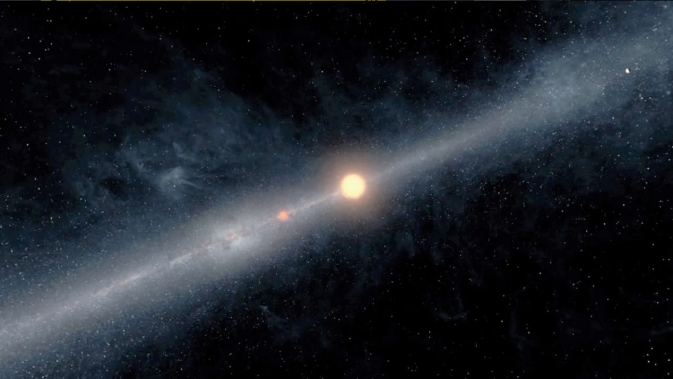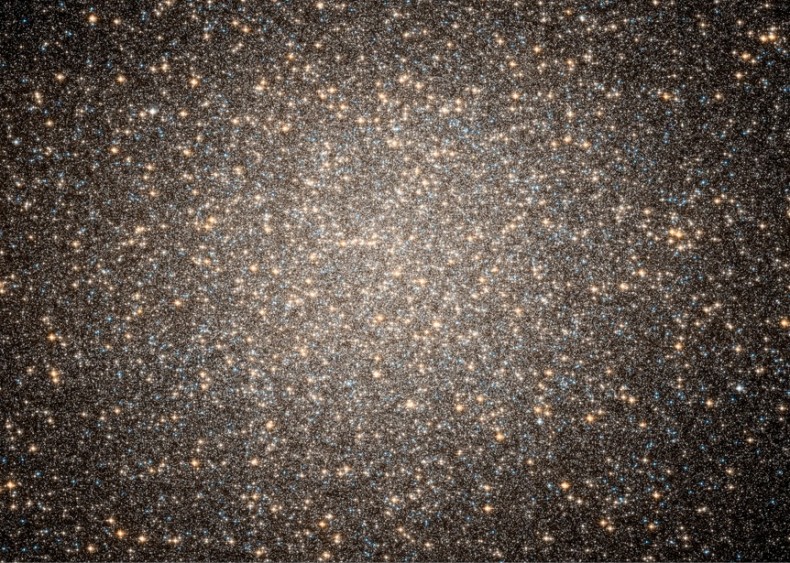 I was interviewing an astronomer for a story about planets outside our solar system, extrasolar planets. Exoplanets have names like Kepler-11 e, or HD 106906 b, or HAT-P-54b. (Googling those names will get you some satisfyingly weird planets and in fact, most exoplanets are satisfyingly weird. I mean, 51 Peg b is 150 times more massive than Earth and is so close to its star, its year is four days.) Anyway, I found I needed to ask the astronomer whether he had trouble keeping all those names straight. “Sometimes I do,” he said, “not always.”
I was interviewing an astronomer for a story about planets outside our solar system, extrasolar planets. Exoplanets have names like Kepler-11 e, or HD 106906 b, or HAT-P-54b. (Googling those names will get you some satisfyingly weird planets and in fact, most exoplanets are satisfyingly weird. I mean, 51 Peg b is 150 times more massive than Earth and is so close to its star, its year is four days.) Anyway, I found I needed to ask the astronomer whether he had trouble keeping all those names straight. “Sometimes I do,” he said, “not always.”
“Shouldn’t those exoplanets have real names?” I said.
“There’s a fuddy-duddy International Astronomical Union that gets worked up and forms committees to name things,” he said.
And well they might. Left to their own devices, astronomers just name things up one side and down the other: 51 Peg b is also called TYC 1717-02193-1 b, IRAS 22550+2030 b, BD+19 5036 b, HIP 113357 b, HR 8729 b, GJ 882 b, HD 217014 b, 2MASS J22572795+2046077 b, and SAO 90896 b.
Wouldn’t it be easier if they just called it, say, Lucille? When we care about something, don’t we name it? The names are given depending partly on who’s finding the planet or its star. HAT is the Hungarian Automated Telescope network; 2MASS and IRAS are both surveys of the sky in the infrared; and Kepler of course is the planet-finding satellite that’s finding them in astonishing numbers. I’m not sure about the rest: I think SAO is the Smithsonian Astrophysical Observatory, HD and BD are the centuries-old Henry Draper and Bonner Durchmusterung catalogs, and HIP might be the modern Hipparchos satellite. You can forgive my not knowing because one of the members of the IAU Executive Committee Working Group on the Public Naming of Planets and Planetary Satellites told me he didn’t know either.
The names are given depending partly on who’s finding the planet or its star. HAT is the Hungarian Automated Telescope network; 2MASS and IRAS are both surveys of the sky in the infrared; and Kepler of course is the planet-finding satellite that’s finding them in astonishing numbers. I’m not sure about the rest: I think SAO is the Smithsonian Astrophysical Observatory, HD and BD are the centuries-old Henry Draper and Bonner Durchmusterung catalogs, and HIP might be the modern Hipparchos satellite. You can forgive my not knowing because one of the members of the IAU Executive Committee Working Group on the Public Naming of Planets and Planetary Satellites told me he didn’t know either.
All I know for sure is that those names — 51 Peg, IRAS 22550+2030 — are really stars’ names and only the little lower-case letter after the name — b — means it’s a planet. But in fact, shouldn’t those stars have real names too? Only a few of them do — Rigel, Aldebaran, Betelgeuse, Deneb — given mostly by the ancient Arabs who were crackerjack astronomers. So then if I name 51 Peg b, Lucille, maybe its star should be Eloise, so 51 Peg b’s real name would be Eloise’s Lucille; and if there’s such a thing as 51 Peg c (there probably isn’t), its name could be Eloise’s Oliver?
Here’s the problem with that. They’ve found maybe 5,000 exoplanets so far, around nearly 500 stars. All the stars we see without a telescope (and most of the stars seen with one) are in our galaxy, the Milky Way, so that’s maybe a few hundred billion stars. That seems like a lot of names to come up with; I wonder whether all the names on Earth would add up to a few hundred billion. And after all, a name like SDSS J102915+172927 does tell the cogniscenti to go to the Sloan Digital Sky Survey’s catalog and find the coordinates J102915+172927 and there it is. I still don’t know how the astronomers who study SDSS J102915+172927 remember it though – maybe they make a little song. I think we should give up naming the stars.
Anyway, you’ll be pleased to know that the International Astronomical Union, which blesses but cannot mandate the names of celestial objects, has reversed its 2009 position and will consider naming the exoplanets. In fact, it’s going to open up the naming to the public. It has its rules – “Pronounceable (in some language); Non-offensive.” Etc. – and given that 5,000 exoplanets is probably the thin edge of a fat wedge, it’s going to have to figure out a process, which it calls “the process.” The IAU doesn’t publish the date on which it will end its consideration of the process; the IAU member I talked to guessed it would take 9 to 12 months. But when the time comes, we’re not going to be able to think of 5,000 names, let alone however many more. And they’ve already used up the Greek, Roman, Gallic, Inuit, and Norse gods.
So I propose the following. The stars that have planets seem so far to have only 1 to 6 each, so planet-naming could be simple: all the “b” planets are named Spence, all the “c” planets are named Lucille, all the “d’s” Oliver, and so on.* I kind of like 51 Peg’s Lucille. SDSS J102915+172927’s Oliver.
I don’t know. Maybe not. Maybe six names won’t be enough names for those strange little planets. But surely they can’t have individual names, they can’t all, 5,000 and growing, have their own different names. I must wait for the 9 to 12 months and the judgment of the IAU, maybe they can figure it out. I did so love planet Oliver.
_______
*Added later, after an alert Twitter astronomer told me there are no “a” planets. I don’t know why. Neither did the Twitter astronomer.
_______
Top photo: Artist’s conception of course: NASA Ames/JPL-Caltech/R Hurt, T Pyle
Bottom photo: the real thing, stars in a cluster called Omega Centauri: NASA, ESA, and the Hubble Heritage Team (STScI/AURA)
Having just read that the director of the Harvard Origins of Life Initiative has named Kepler-10c, a huge newly discovered earth-like exoplanet, “The Godzilla of Earths”, I think: probably not a good idea.
I try never to argue with astronomers about astronomy but I have to agree, Godzilla is just not a nice name.
The letter “a” is traditionally reserved for the star, as in HD 90745 A. Also, the star’s letter is uppercase while the planets’ letters are lowercase.